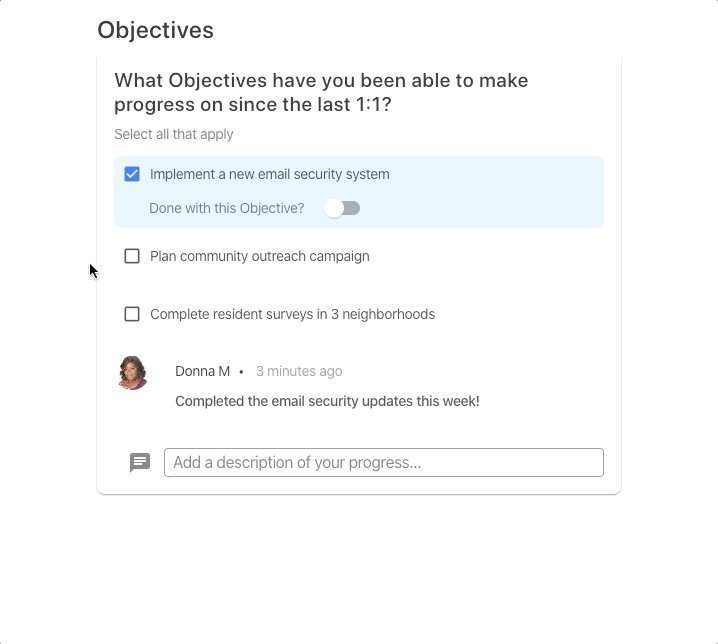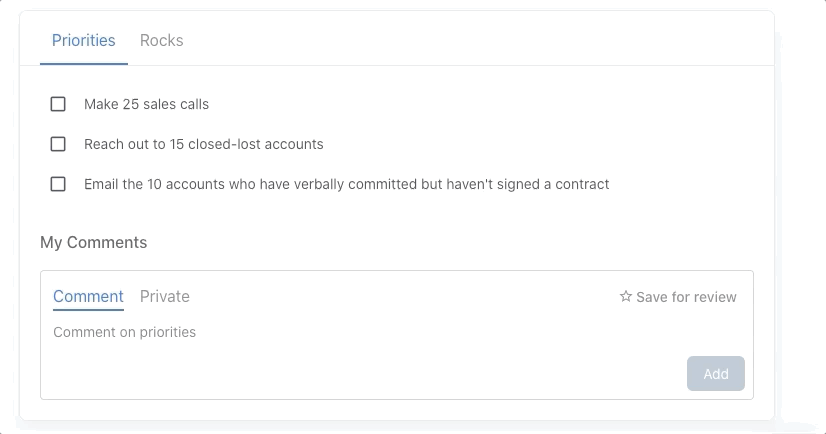At the beginning of each quarter many of us spend some time setting (what we think) are important goals. We dream about what it would be like to achieve them, and for a little while — maybe about a week — we feel re-energized and have hope that success is just around the corner.
Then reality hits. The tyranny of the urgent continues to wash over us day after day. Goals? We forget about them until it comes time to set new goals.
And the cycle continues…
Why does this keep happening?
In talking with hundreds of leaders over the years, I’ve realized that the discouraging cycle of goal-setting continues because we don’t know how to set goals that inspire action and keep the hope of success alive. The goals we set are often too vague or too big to grasp, and not long after they’re set they start to fade into the background.
How can we set goals that are meaningful, energizing and set us up for success?
By Using S.M.A.R.T. Goals
You may have heard of S.M.A.R.T Goals but you may not know how to implement them. S.M.A.R.T. is an acronym that helps us define what the pieces we need in order to create a real goal. There are several different definitions that people use, but I prefer Specific, Measurable, Achievable, Relevant and Time-Bound. Let’s break down the S.M.A.R.T goal model with some real-life business examples.

S – Specific
When setting a goal, it’s important to ask yourself a few questions first.
Who is going to be responsible for this goal, and who else is needed to accomplish it?
Without a “who” — a person accountable for making sure it happens — you will have very little chance for success.
What, exactly, are you trying to accomplish? What does success look like, and how do you know when you’ve achieved it?
A goal to “increase revenue” doesn’t tell anyone anything, and at the end of an evaluation period it would be very difficult to know how to measure success. Are you trying to increase overall revenue, or the revenue from a specific product or service? And you’re presumably not looking for a $.01 increase in revenue, right? Get specific.
Fuzzy goals like “cut costs” or “make more money” will never leave you feeling like you’ve done something significant. So dig in, get detailed, and write it out.
Non-SMART goal: Increase revenue
Specific goal: Increase software sales revenue by 100%.
Want to be a better manager with a happier, healthier and more effective team?
Sign up for a free coaching consultation with Uptick Co-founder Chris Zaugg to improve your team’s effectiveness by connecting relationally.
M – Measurable
If you can’t measure it, how do you know if you’ve hit your goal?
“Increase revenue” may sound like a goal, but it’s really just a platitude until you put the teeth of measurement into it.
I’ve heard it said that a good goal follows this formula: “X to Y by DATE”. “From $10M in revenue to $20M in revenue by 12/31/2020” is a measurable goal that follows that formula. At the end of 2020, you merely need to look at your revenue numbers to see if you’ve accomplished it.
Non-SMART goal: Increase software sales revenue by 100%
Specific + Measurable goal: Increase software sales from $10M to $20M in six months.
A – Achievable
You’ve set a goal that is specific and measurable, but can you actually achieve it?
There are two things to consider when setting an achievable goal: 1. Can it be broken up into smaller pieces so you can actually do it? And 2. Is the goal you set realistic?
If your ultimate goal is to increase revenue, the “how” is just as important as the “what”. You need to have the ability to break the goal into smaller, actionable pieces so you can evaluate progress. For example, actionable steps could be “increase sales calls by 20%, increase close rate by 10%, follow up with all accounts marked as “closed-lost” in the past year.”
Goals can be hard. In fact, they should be hard or they’re probably not worth achieving. That said, if they’re not realistic they can just be discouraging. The purpose of goal setting is to inspire achievement, not cause frustration or depression. So, is it realistic for you to increase software sales revenue by 100% in 6 months? Maybe. What did your software sales revenue look like in the first half of the year? How much did it increase from the previous 6 months? If you saw an 80% increase, you’ve probably set a challenging, yet realistic goal in trying to increase it by 100% of the next 6 months. If it only grew by 15%, you should probably consider setting a more realistic goal.
Non-SMART goal: Increase software sales revenue by 100%
Specific + Measurable + Attainable goal: Increase software sales from $10M to $20M in six months by increasing sales calls by 20%, increasing close rate by 10% and following up with closed-lost accounts.
R – Relevant
R, or “relevant” speaks to the “why” of your goal. Will this actually make a difference in your business? Sometimes we feel like we need a goal, so we create one just to have one…but will it actually move the needle in the right direction? And is it the right thing to focus on?
We should always ask ourselves if our goal is relevant – even if the answer is obvious. Ask yourself who the key stakeholders are and how they will benefit from increased revenue. Better stock dividends? More resources for developing new products? The ability to hire more staff? Bonuses for the employees? There should be a relevant reason for your goal, because if there’s not, it’ll be hard to stay motivated when obstacles arise. And if you’re working on goals with a team, making it relevant will make it infinitely easier to get their buy-in!
Non-SMART goal: Increase software sales from $10M to $20M in 6 months by increasing sales calls by 20%, increasing close rate by 10% and following up with closed-lost accounts.
Specific + Measurable + Attainable + Relevant goal: In order to give employees a 20% bonus, our goal is to increase software sales from $10M to $20M in 6 months by increasing sales calls by 20%, increasing close rate by 10% and following up with closed-lost accounts.
T – Time-bound
Setting a time frame is critical to making a goal tangible. Before you set an arbitrary time frame for a goal, spend time on the “S.M.A.R.” part of your planning, and set a challenging but realistic completion date for your goal.
If you know how much you want to increase revenue but you don’t know the “by when”, you will make completely different decisions. One year? 10 years? Imagine how much knowing the time frame would make a difference.
This is another opportunity for you to be specific as well. Instead of “a year” or “six months from now” give your goal a specific end date. It’s hard to know off the top of your head how far you are into the year you’ve given yourself to complete the goal, and much easier to level-set and gauge how much time you have left until August 1, 2020.
Non-SMART goal: In order to give employees a 20% bonus, our goal is to increase software sales from $10M to $20M in 6 months by increasing sales calls by 20%, increasing close rate by 10% and following up with closed-lost accounts.
Specific + Measurable + Attainable + Relevant goal: In order to give employees a 20% bonus, our goal is to increase software sales from $10M to $20M by 12/31/2020 by increasing sales calls by 20%, increasing close rate by 10% and following up with closed-lost accounts.
You’ve set a S.M.A.R.T goal, now what?
Awesome — you’ve got yourself a bonafide S.M.A.R.T goal — so what comes next?
Now comes the real work. It can be easy to pat yourself on the back and say “job well done” for setting a S.M.A.R.T goal, but now you’ve got to follow through and work towards achieving it. By setting a S.M.A.R.T goal, you’ve already taken the first step to setting yourself up for success, but it’s important to stay on top of things by tracking and document progress made on personal and team goals.
In Uptick, managers and team members are able to set goals or objectives and easily track progress so everyone is always on the same page and in alignment.

Your team members won’t have to struggle to remember what they should be prioritizing or focusing on, because Uptick automatically transfers the priorities you set together into an easy to use to-do list.

Ready to start tracking your goals more efficiently and effectively? Signup for a free Uptick account today.
Want to be a better manager with a happier, healthier and more effective team?
Sign up for a free coaching consultation with Uptick Co-founder Chris Zaugg to improve your team’s effectiveness by connecting relationally.


